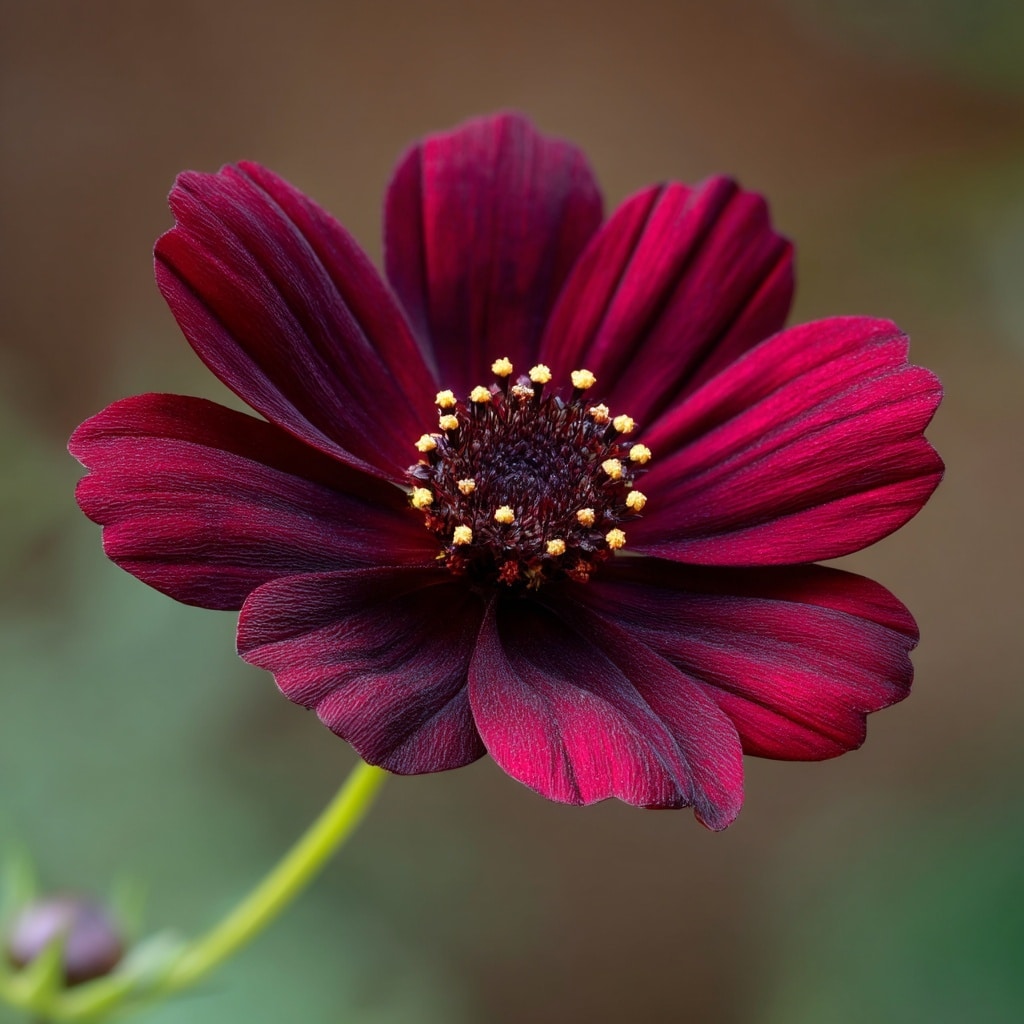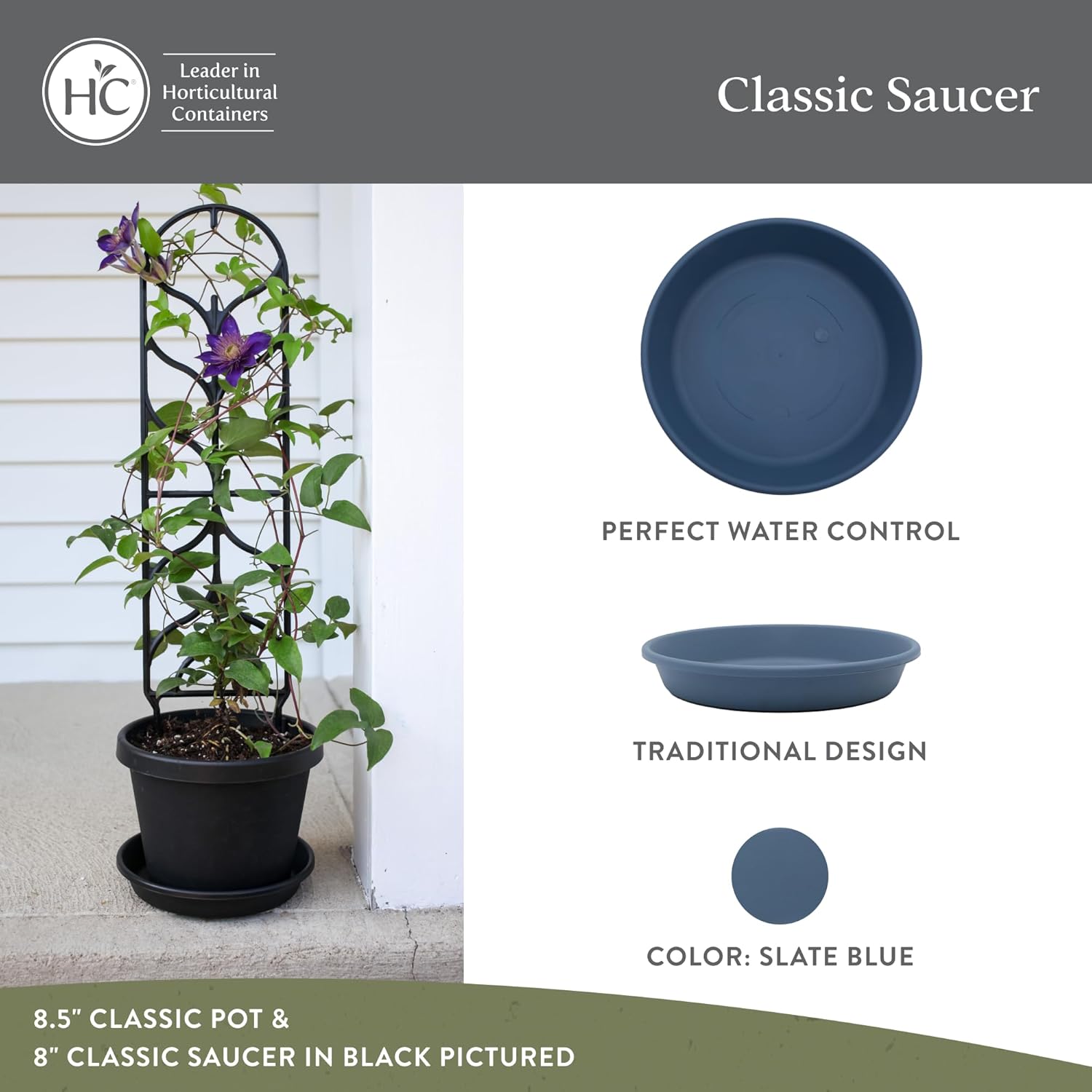Rare flowers are nature’s most captivating treasures—elusive, breathtaking, and often blooming under the most delicate of conditions. While common blooms like roses and tulips fill gardens and bouquets, there exists a hidden world of flora so unique, you may never encounter them outside of botanical journals or remote jungles. From midnight blossoms to sweetly scented petals that only grow in protected corners of the world, these extraordinary flowers remind us just how mysterious and fragile nature can be. In this guide, we’ll take you through ten of the rarest flowers found across the globe—each with a story as remarkable as its bloom.
Table of Contents
1. Blue Star Water Lily
Delicate and radiant, the Blue Star Water Lily (Nymphaea nouchali) is one of the most mesmerizing rare flowers found across Asia. It holds deep cultural significance, proudly serving as the national flower of both Bangladesh and Sri Lanka. But beyond symbolism, its beauty lies in its ephemeral nature.
This aquatic bloom unfurls violet-blue petals surrounding golden stamens, creating a visual contrast that almost glows against the water’s surface. What makes it truly rare is its brief flowering period—this lily only opens for about seven days each year. Even more enchanting is how the stamens only fully bloom just before the flower begins to fade, almost as if it’s saving its grand finale for last.
Blue Star Water Lilies thrive in calm, warm freshwater environments and are highly sensitive to climate changes and pollution. That vulnerability, combined with their short bloom time, makes them a true gem among water-dwelling flora.
2. Jade Vine
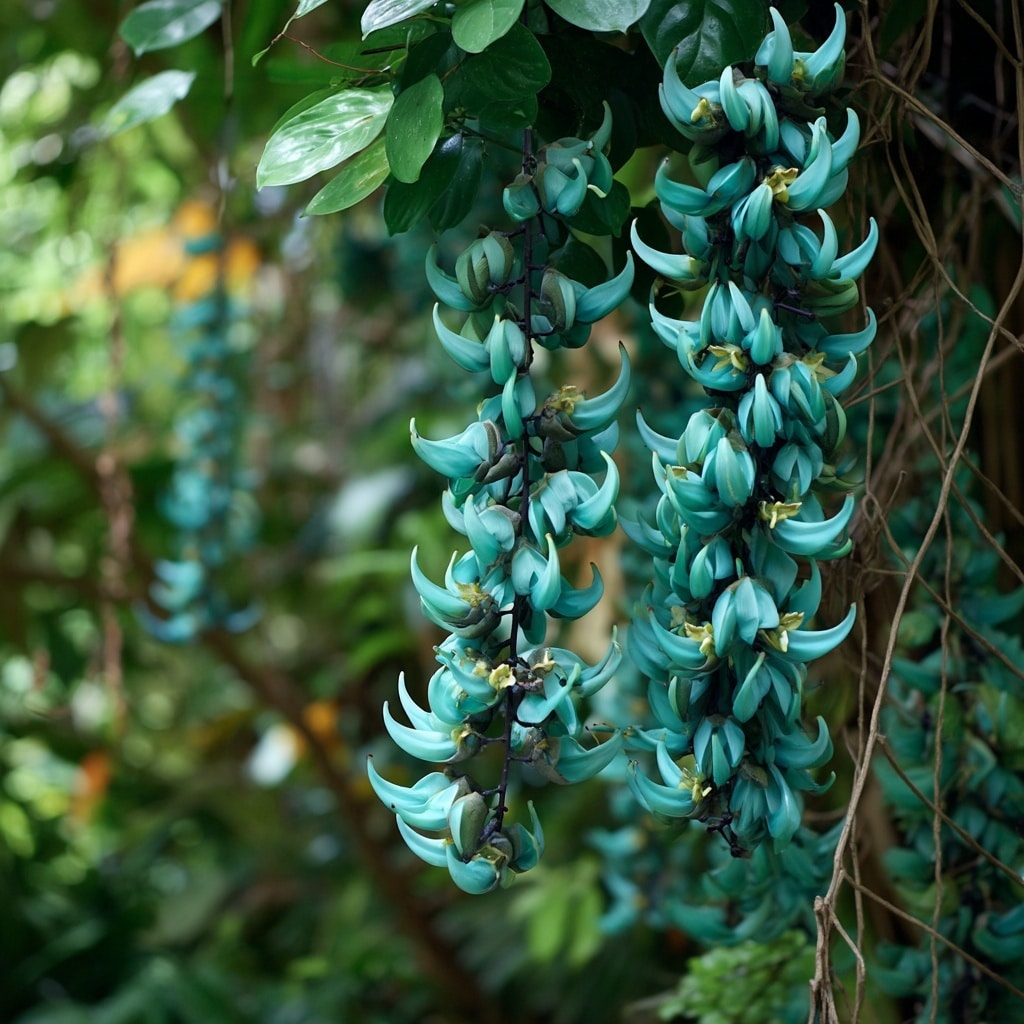
The Jade Vine (Strongylodon macrobotrys) is a tropical marvel that stands out among rare flowers for its surreal, luminous hues. Native only to the dense rainforests of the Philippines, this climbing plant produces cascading clusters of claw-shaped blooms that shift in color from soft mint to deep jade and turquoise as they mature — a palette almost unheard of in the natural world.
This exotic vine is extremely difficult to cultivate outside its native habitat. It requires not only a specific type of soil but also the help of natural pollinators—typically bats—that have become scarce due to deforestation. As a result, Jade Vines have become increasingly endangered, making any successful bloom outside the wild a botanical triumph.
From December to April, the plant enters its flowering season. Even then, it seldom bears fruit, adding to its elusive nature. For gardeners and conservationists alike, the Jade Vine remains a prized and protected rarity, admired as much for its beauty as for its fragility.
3. Parrot Flower
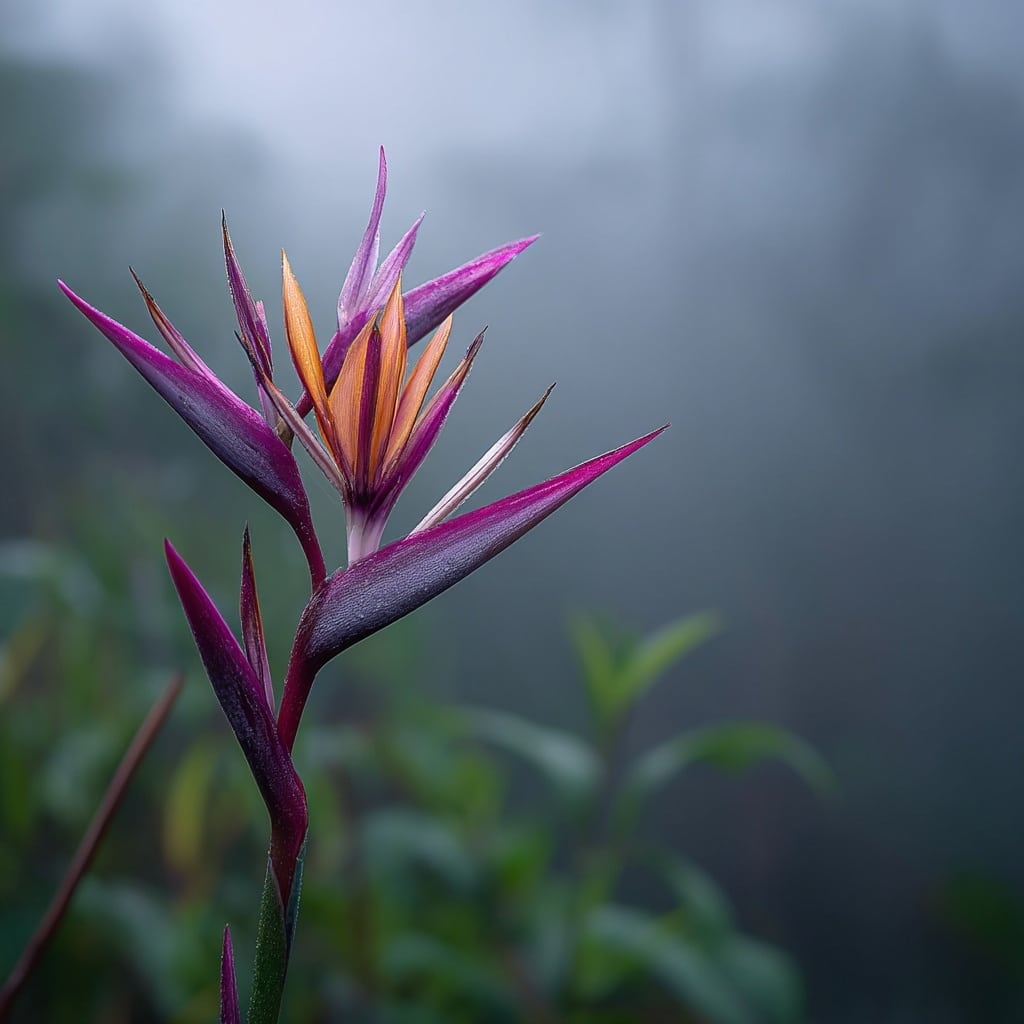
The Parrot Flower (Impatiens psittacina) earns its name from an incredible natural illusion — its blossoms closely resemble a parrot in mid-flight. Found only in the shaded forests of northern Thailand, parts of Myanmar, and northeastern India, this botanical mimic is one of the most visually fascinating among rare flowers.
Its curved, translucent petals appear in shades of purple, white, pink, and even a reddish-brown, branching off thick green stems. But beyond its striking appearance, what truly defines its rarity is its protected status. Because it is listed as a restricted species, the Parrot Flower cannot legally be exported or cultivated outside its native regions.
Adding to its mystique, the plant blooms for just a short window during the monsoon season and only under very specific humidity and altitude conditions. Gardeners around the world may admire it from afar, but only a fortunate few ever witness its bloom in person. Its rarity isn’t just in its appearance — it’s inaccessibility ensures it remains one of nature’s best-kept floral secrets.
4. Ghost Orchid
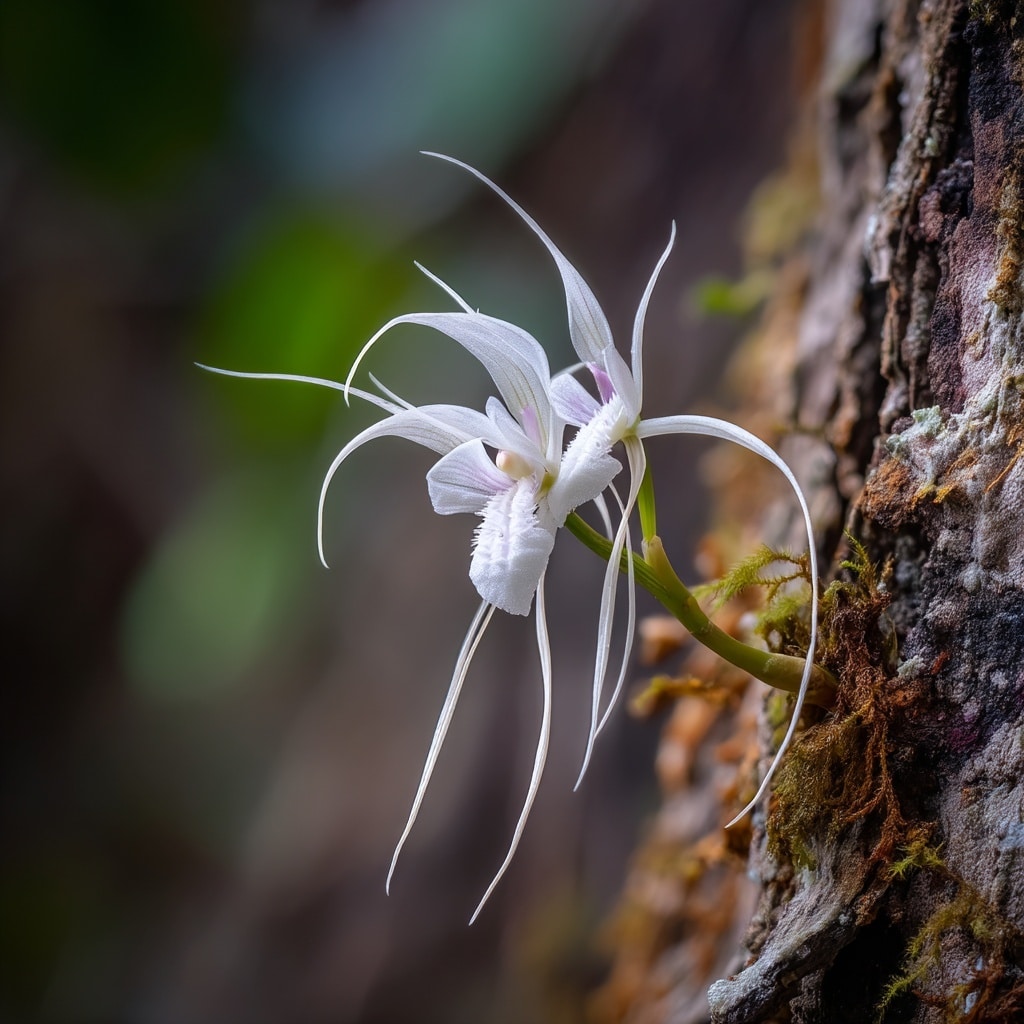
Elusive and ethereal, the Ghost Orchid (Dendrophylax lindenii) is one of the most mysterious rare flowers on Earth. Found in only a handful of swampy forests in Florida and Cuba, this endangered orchid seems to hover in midair, thanks to its leafless, vine-like roots that cling invisibly to tree bark. Its pale, spider-like petals give it a ghostly appearance—hence the name.
What makes the Ghost Orchid especially rare is its dependency on very specific conditions: high humidity, warm temperatures, and the presence of particular fungi for root survival. Even in the wild, it’s notoriously difficult to find. It doesn’t bloom annually, and when it does, flowering typically occurs in mid-summer and lasts for just a few weeks.
To add to its mystique, this orchid cannot be pollinated by hand. It relies solely on a single species of moth for reproduction, making cultivation outside its natural habitat nearly impossible. With its haunting beauty and fragile existence, the Ghost Orchid is not just a flower—it’s a botanical enigma that symbolizes the fragility of biodiversity.
5. Slipper Orchid

Among the most captivating rare flowers in the orchid family is the Slipper Orchid, belonging to the subfamily Cypripedioideae. Its distinctive pouch-like lip resembles a delicate slipper or moccasin, serving both a visual appeal and a clever evolutionary function — trapping insects to aid pollination.
Slipper Orchids are spread across several continents, including parts of North and South America, Europe, and Asia. However, they remain elusive due to their highly specific growing requirements. These orchids thrive only in calcareous (lime-rich) soil and shaded, moisture-rich environments. As such, they are incredibly sensitive to habitat disturbance, climate shifts, and overharvesting, especially by collectors and orchid enthusiasts.
In Australia and Africa, Slipper Orchids are virtually absent in the wild, making them even rarer in those regions. For gardeners lucky enough to nurture one successfully, the bloom is a showstopper—elegant, vibrant, and a true conversation piece. The Slipper Orchid is a reminder that sometimes the most beautiful things grow only where nature allows — and nowhere else.
6. Middlemist Red
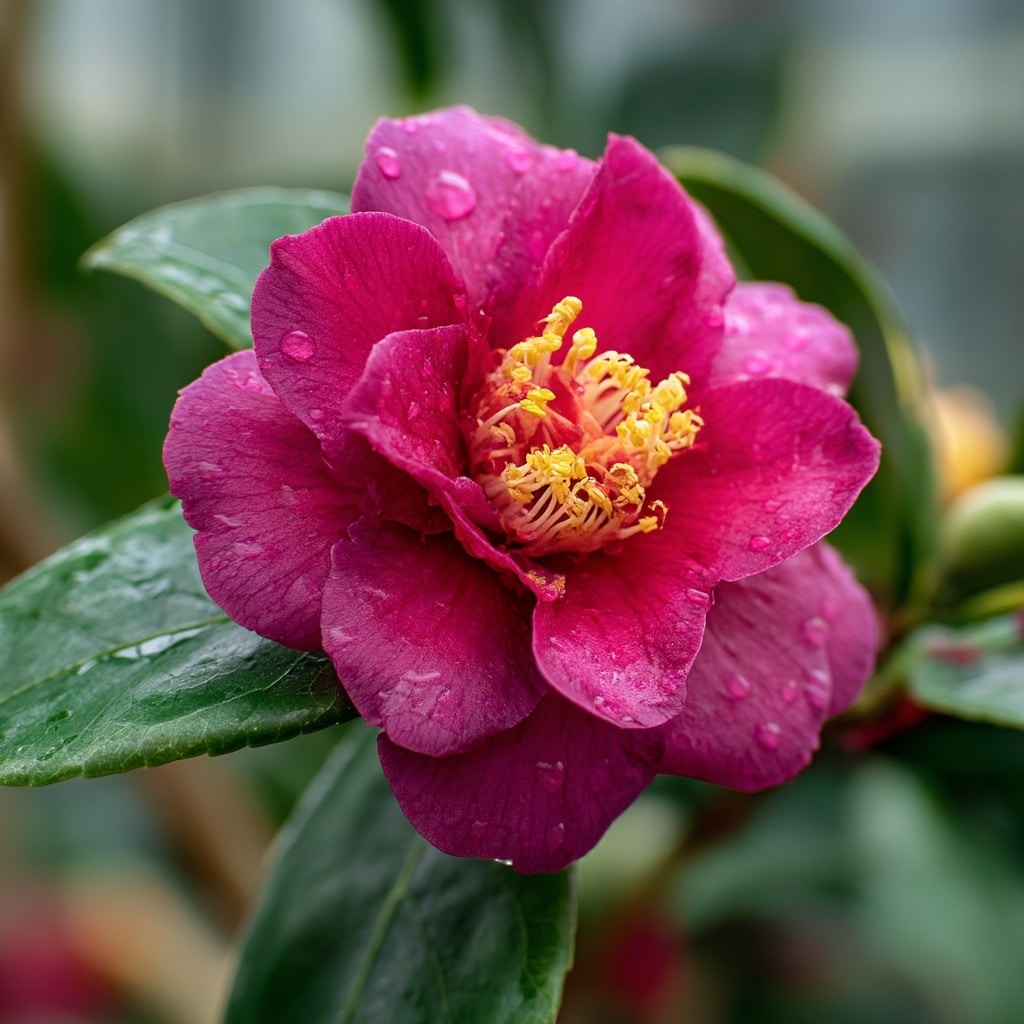
The Middlemist Red is one of the world’s rarest flowering plants, with only two known specimens in existence today. A luxurious variety of camellia, this vivid magenta-pink flower once flourished in China, but has since vanished from its native land — a true symbol of botanical rarity. Now, it can only be seen in two secluded locations: Chiswick House & Gardens in England and the Treaty House in New Zealand.
Introduced to the UK in 1804 by botanist John Middlemist, the flower’s journey from China to obscurity is part mystery, part horticultural marvel. Its vibrant blooms, full of silky petals arranged in perfect symmetry, resemble a peony more than a traditional camellia, making it a standout even among other rare flowers.
Protected and carefully cultivated under glasshouse conditions, the Middlemist Red blooms just once a year, typically in early spring. With no wild specimens known to exist, each flowering is not just an aesthetic event — it’s a moment of living history. Few flowers symbolize preservation and fragility quite like this living relic.
7. Rafflesia
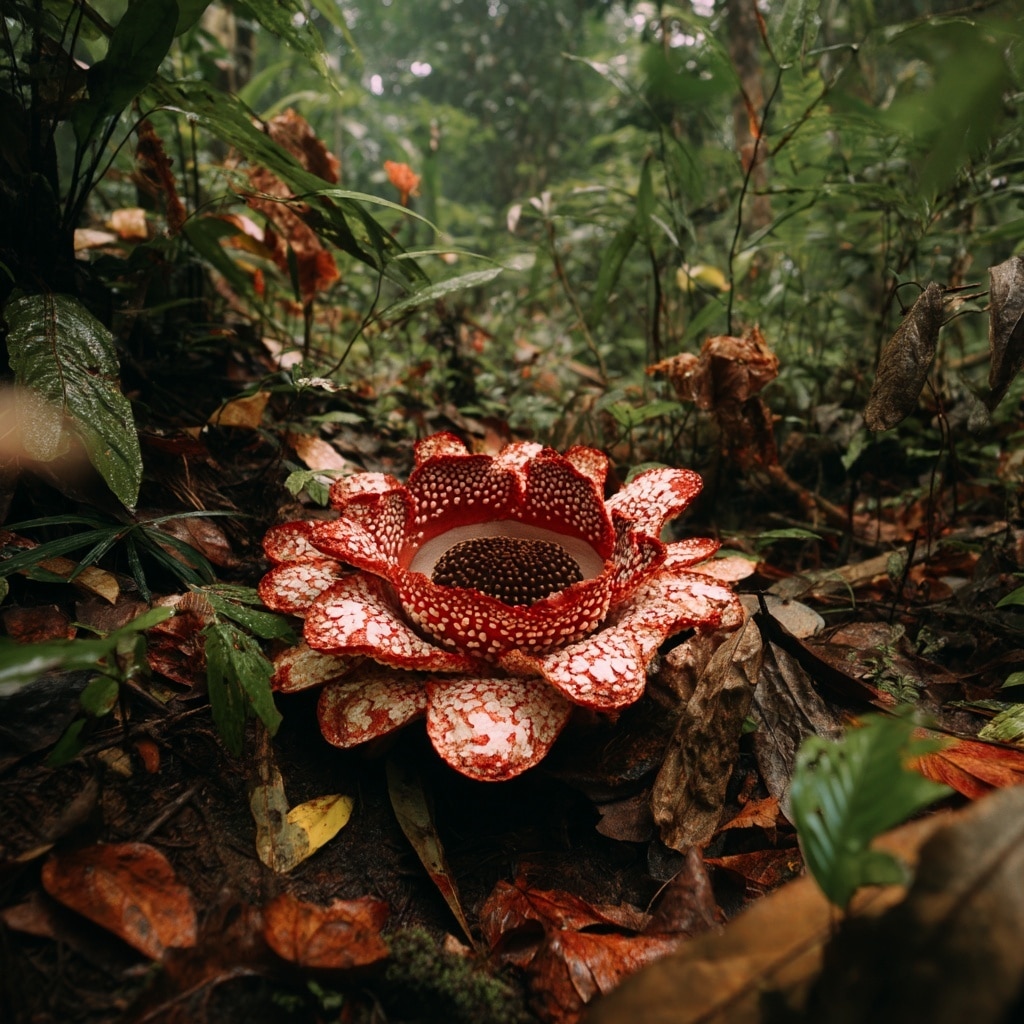
If there’s a flower that redefines the meaning of “rare,” it’s the Rafflesia — a gigantic, parasitic bloom native to the rainforests of Borneo and Sumatra. Known as the world’s largest flower, some Rafflesia species can reach up to three feet in diameter and weigh over 15 pounds. Despite its visual drama, this botanical beast is infamous for one thing: its foul, corpse-like odor.
This pungent scent is no accident—it’s how Rafflesia attracts carrion flies for pollination. The bloom itself has no visible leaves, stems, or roots. Instead, it survives entirely by leeching nutrients from a host vine deep within the jungle floor. This parasitic relationship and extremely narrow growing conditions make the Rafflesia extraordinarily difficult to locate and nearly impossible to cultivate outside its habitat.
Adding to its mystery, the flower blooms only once in its lifetime, and the blossom lasts just a few days. Despite its unpleasant smell, it holds medicinal significance in some local cultures and even inspired the Pokémon “Vileplume.”
As one of the most biologically unique rare flowers, Rafflesia is a true natural spectacle—repulsive, fascinating, and unforgettable.
8. Queen of the Night
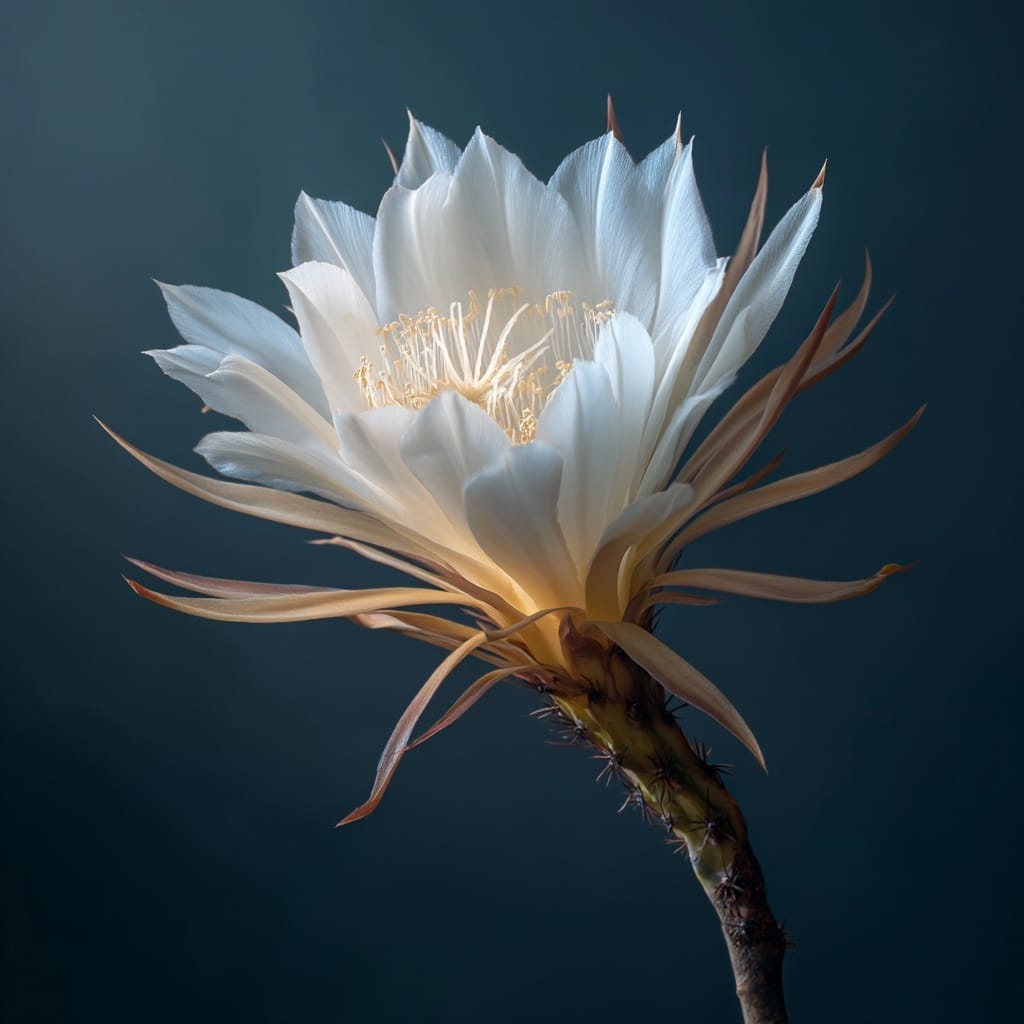
As mysterious as its name suggests, the Queen of the Night (Epiphyllum oxypetalum) is a rare cactus flower that blooms only once a year — and only at night. Native to southern Mexico and parts of South America, this elusive bloom has captivated cultures across Asia, where it’s often cultivated in home gardens and temples for its mystical, fleeting beauty.
Unlike most flowers that bask in the sun, the Queen of the Night waits until after dusk to open its large, white, fragrant petals. The bloom typically begins late in the evening and wilts by dawn — giving admirers just one to two hours to witness its full splendor. Its powerful, sweet scent fills the air as the petals unfold, creating a sensory moment that feels almost sacred.
This flower cannot be bought or sold on the open market, and its blooming period is unpredictable, which adds to its allure. For many, watching it bloom is a once-in-a-lifetime event — and one that often inspires celebration and reverence.
Among rare flowers, the Queen of the Night stands apart not only for its rarity, but for the magical experience it offers under the moonlight.
9. Titan Arum
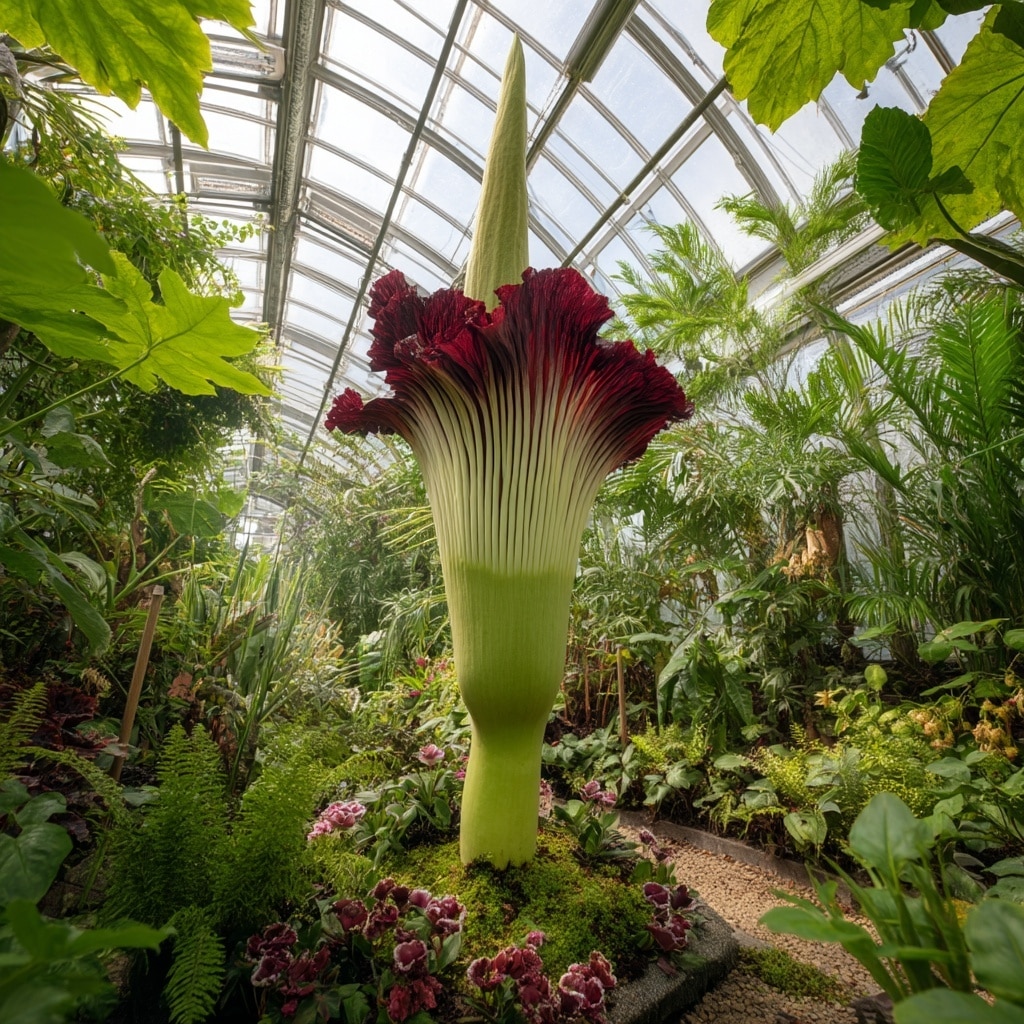
Known as the Titan Arum (Amorphophallus titanum), or more famously as the Corpse Flower, this colossal plant is both fascinating and formidable. Native to the rainforests of western Sumatra, it produces the tallest unbranched inflorescence in the world, reaching heights of over 10 feet. But size isn’t its only claim to fame—it’s best known for the overpowering stench it emits while in bloom, reminiscent of decaying flesh.
This ghastly odor serves a biological purpose: attracting carrion beetles and flesh flies to ensure pollination. But despite its strong scent and size, the Titan Arum is exceptionally rare. It blooms only two to three times in its entire life, and each bloom lasts for just 24 to 48 hours before it collapses.
Because of its extreme sensitivity to environmental changes and long dormancy periods, it’s difficult to grow and maintain outside of tropical zones. Today, only select botanical gardens around the world have managed to cultivate it successfully, often drawing crowds when the plant is about to bloom.
A true spectacle among rare flowers, the Titan Arum is a reminder that nature’s wonders are not always sweet-smelling — but they’re certainly unforgettable.
10. Chocolate Cosmos

If flowers had dessert counterparts, the Chocolate Cosmos (Cosmos atrosanguineus) would be the ultimate indulgence. Native to Mexico, this rare and romantic flower is prized for its rich burgundy petals and — most uniquely — its natural chocolate scent. Yes, it really does smell like cocoa.
This intoxicating fragrance, paired with its velvety color, makes it a favorite among collectors. But what cements its status as one of the world’s most beloved rare flowers is its limited existence in the wild. In fact, the original wild variety is extinct in nature, and all modern Chocolate Cosmos plants are reproduced through cloning.
Blooming in the late summer evenings and fading shortly after, this flower has an unusually short lifespan. As a result, several regions in Mexico have placed protections around its native habitat to prevent further disruption. You won’t find it sold in bunches at a florist—it’s more of a horticultural treasure, grown in private gardens and botanical conservatories.
Despite its rarity, the Chocolate Cosmos enchants all who experience it. It’s living proof that even the smallest, most delicate flowers can leave a powerful impression.
Conclusion
The world of rare flowers is as fragile as it is breathtaking. From the fleeting bloom of the Queen of the Night to the towering spectacle of the Titan Arum, each flower on this list reveals just how intricate and extraordinary nature can be. These blooms aren’t just beautiful—they’re reminders of biodiversity, environmental balance, and the delicate conditions needed for such wonders to exist.
Whether you’re a home gardener, a plant enthusiast, or simply someone who appreciates the hidden marvels of the natural world, these rare flowers offer more than visual beauty—they invite awe, respect, and conservation.

